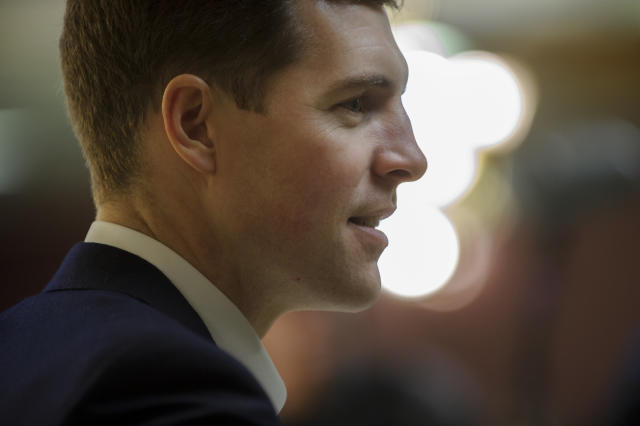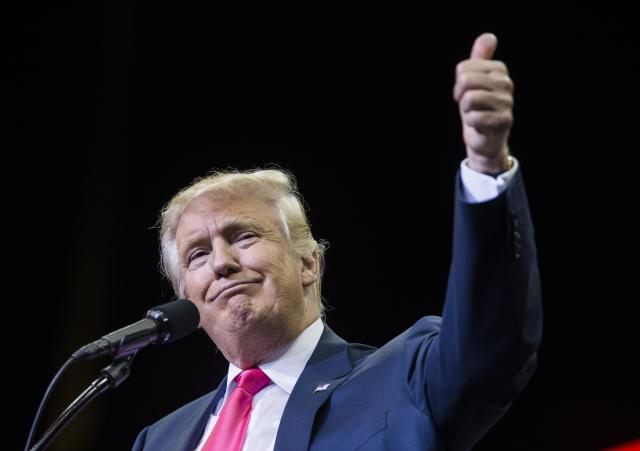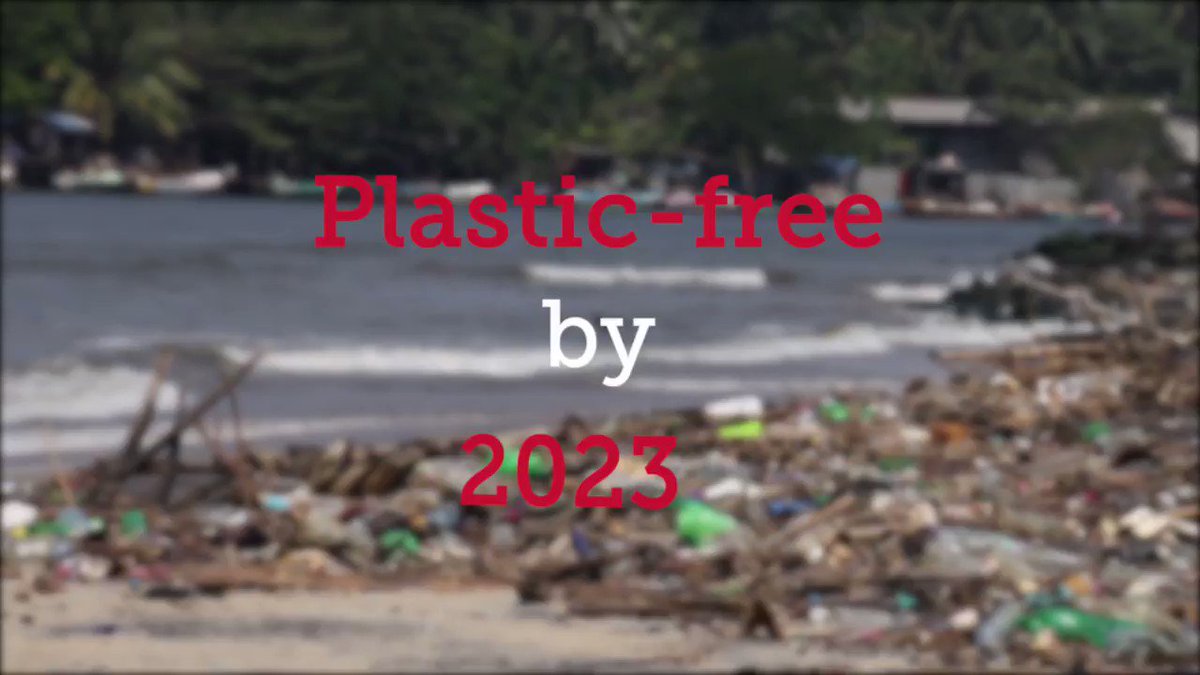HuffPost
Trump Is Scrambling To Avoid A Special Election Defeat In This Rust Belt District
Daniel Marans, HuffPost January 18, 2018
HOUSTON, Pa. ― Conor Lamb, the Democrat running to represent this district in Congress, was wrapping up an interview with a reporter last week when Ted Skowvron, a 93-year-old veteran in a World War II cap, walked over to shake his hand.
Lamb thanked Skowvron for his service and asked him where he’d served.
Skowvron informed Lamb that was he was a ball gunner on a B-17 in the European theater. But he was more interested in discussing President Donald Trump.
“I just wanted to let you know: Get in there and get him out! Cuz if you don’t do it, I’m coming down myself,” the lifelong Democrat and retired union crane operator exclaimed.
Meet the Resistance here in Pennsylvania’s southwestern corner. Lamb is hoping there are enough voters like Skowvron who will help him score another upset victory for Democrats and flip a GOP-held seat in the special election on March 13.
This district should be no problem for Republicans to hang onto. Pennsylvania Republicans gerrymandered the 18th District to combine GOP-leaning Pittsburgh suburbs with once-Democratic mill towns and rural areas that have trended steadily more Republican in recent national elections. Tim Murphy, the Republican incumbent, ran unopposed in 2014 and 2016, and Trump won the district by a whopping 20 percentage points.
But the special election clearly has Republicans on edge.
Lamb is competing with Republican Rick Saccone, a 59-year-old state representative and former military intelligence officer. Murphy had held the seat comfortably since 2003, but resigned in October after it emerged that the anti-abortion congressman had asked a woman with whom he was having an extramarital affair to have an abortion.
Democrats have had a string of victories since Trump’s inauguration. In fact, they’ve flipped 34 state legislative seats, one governor’s seat and one U.S. Senate seat from red to blue. Republicans, meanwhile, have only picked up four state legislative seats.
Trump is heading to the 18th District on Thursday to stave off another potentially embarrassing defeat. He’ll hold a rally for Saccone, whose fundraising has reportedly been lackluster.
Democrats, meanwhile, are hoping that the energy from the base and the excitement from other wins over the past year will bubble over to benefit Lamb as well.
An Upset In The Heart Of Trump Country?
Skowvron was one of some 85 people who braved snow-clogged roads and temperatures in the teens on Saturday to hear Lamb, a 33-year-old former federal prosecutor and veteran of the Marines, speak briefly at an American Legion hall in a small town southwest of Pittsburgh.
The boisterous crowd, which gave Lamb the whooping welcome of a celebrity, looked like the district. It was overwhelmingly white, with more VFW caps, union pins and Pittsburgh Steelers shirts than pink pussy hats and anti-Trump gear. But the audience members were just as energized as any other resistance gathering, realizing they have a viable Democratic congressional candidate for the first time in years.
“It’s been a very, very long time” since a crowd that big turned out for a Democrat in the district, said Joe Zupancic, a 48-year-old attorney running as a Democratic candidate for an open state House seat. The last time, he estimated, was “probably back in the ’90s, when this seat was Democrat to begin with.”
No one’s denying that Lamb has an uphill climb.
In a special election where low turnout is a given, however, the district’s higher-than-normal level of Democratic enthusiasm matters.
Add to the mix a Democratic candidate with a strong biography and a Republican candidate with a record at odds with the district’s influential labor unions, and it becomes clear why the national Republican Party is not taking any chances.
Earlier this month, the deep-pocketed Congressional Leadership Fund, a GOP super PAC affiliated with House Speaker Paul Ryan (R-Wis.), announced the opening of a field office in the district. The operation will include 50 full-time door knockers who aim to make 250,000 voter contacts, the super PAC said.
Republican outside groups are also on the airwaves ahead of either candidate. Ending Spending Inc., a super PAC backed by the billionaire Ricketts family, made a $1 million ad buy in support of Saccone. And the pro-Trump 45Committee is spending $500,000 on ads, including a 30-second released last week that hits “Liberal Conor Lamb” for opposing Trump’s tax cut bill.
In addition, Vice President Mike Pence is slated to campaign for Saccone. The Republican National Committee has a permanent field office in Western Pennsylvania that is helping to turn out GOP voters, and the super PAC America Rising has been sending a video tracker to all of Lamb’s campaign events.
National Democratic groups, by contrast, are thus far largely limiting their support for Lamb to verbal praise for his bid. The Democratic Congressional Campaign Committee, which works to elect House Democrats, said it had no investments to announce at this time. And when asked about its involvement in the race, the Democratic National Committee referred HuffPost to its monthly $10,000 contribution to the Pennsylvania Democratic Party through the Every ZIP Code Counts program.
End Citizens United, a national liberal PAC, announced its endorsement of Lamb on Wednesday. The group raised $600,000 to elect Alabama Democrat Doug Jones to the Senate, but it is not clear how much it plans to spend on Lamb’s behalf.
The DCCC and DNC “have to kind of wait and see how much the Lamb team raises, because it is gonna be an expensive race,” said a Democratic source with knowledge of the national party’s considerations.
“It is not helpful for them for the party to be coming in and being so overt,” the source added.
It’s still possible to craft winning messages to win at least segments of the white working class that enables the party to do well everywhere. Mike Mikus, Democratic campaign consultant
The southwestern Pennsylvania district offers a unique proving ground for Democrats whose strongest electoral performances since November 2016 have largely been in districts Trump lost or won only narrowly. If Democrats flip the 18th, or even hold the GOP to a narrow margin, it will put Republicans on notice that no seat is immune to a Democratic midterm wave.
It is also liable to make the Democrats think twice about ignoring former Democratic strongholds in the Rust Belt where Trump outperformed his Republican predecessors.
“The problem with a lot of people in Washington is that they equate white working-class, non-college-educated voters as being racist Neanderthals and should be written off,” said Mike Mikus, a veteran Democratic strategist based in the district. “Obviously, the Democratic Party should never turn away from its values of inclusion and equality, but it’s still possible to craft winning messages to win at least segments of the white working class that enables the party to do well everywhere, rather than just the coastal elites, the big cities.”
The saga of declining Democratic fortunes in the industrial areas of Pennsylvania and other Great Lakes states is by now a familiar yarn. Deindustrialization weakened the labor unions that bound many working-class residents to the party, and Democrats’ increasingly progressive stances on racial and cultural issues created an opening for socially conservative Republican candidates.
Congressional Democrats held on for years in increasingly conservative districts by stressing kitchen-table economic issues and union bona fides, while bucking liberal orthodoxy on issues like guns, abortion and the environment. Mark Critz, the last Democratic House candidate to win in swathes of the current 18th District (before its borders were subsequently redrawn), ran in a May 2010 special election as an opponent of gun control and abortion rights, as well as the newly enacted Affordable Care Act.
Even as the 18th District’s voters have increasingly rejected Democrats in federal elections, the party has retained some power at the state and local levels. Democrats enjoy majorities on the county commissions in 3 in 4 counties in the district.
“The people in this district who voted for Trump do not view a ‘D’ by your name as a disqualifier,” Mikus said.
Picking ‘Somebody In The Middle’
Due to the rushed timeline for the special election, both Lamb and Saccone were selected by party officials and activists at their respective conventions, rather than in primaries.
Lamb nonetheless defeated six rivals for the post.
Allen Kukovich, who served as a Democratic state lawmaker from 1977 to 2004 and voted for Lamb at the party convention in November, said Lamb “struck me as somebody who was ready right now. And with the special election and the national exposure that this is likely to get, there is very limited time to grow into the job.”
The district’s Democratic hands also opted for a candidate with unimpeachable patriotic credentials, deep roots in the district and relatively moderate policy stances ― criteria perhaps equally as important as preparedness.
“It’s important that the progressive Democrats understand this is a tough district to win,” said Nate Regotti, chief of staff to state Rep. Pam Snyder, a Democrat who represents a portion of the district on the West Virginia border. “They want somebody in the middle that’s gonna represent them no matter how they feel, and I think Conor Lamb’s gonna do that.”
Lamb, a native of Mt. Lebanon, an affluent suburb just south of Pittsburgh, is the scion of an Irish-Catholic Democratic family that has been influential in regional politics for generations. His grandfather, Thomas Lamb, served as the Democratic majority leader of the Pennsylvania state Senate.
Lamb is running on creating decent-paying jobs through a massive infrastructure bill, protecting Social Security and Medicare, and marshaling federal resources to address the opioid crisis that has ravaged many of the old mill towns southwest of Pittsburgh.
Although Lamb touts his experience tackling heroin and opiate trafficking as a federal prosecutor, he favors a health care driven approach to solving the epidemic.
Speaking to HuffPost, Lamb calmly rattled off proposals to secure federal funding for more rehabilitation facilities, longer rehab stays and medical treatment upon release.
He views these plans as a critical point of contrast with his rival Saccone, who voted for a state House budget that cut $10 million in funding for the life-saving opioid overdose drug Naloxone.
“You wanna talk about being pro-life? You don’t vote against a drug that saves people’s lives,” Lamb said.
Lamb also sees protecting the Affordable Care Act’s Medicaid expansion as a key component in the fight against opiate abuse, since it is frequently the program that provides insurance for addicts. He would shore up the health care law’s private insurance exchanges through technocratic fixes like extending public reinsurance to participating insurers.
You wanna talk about being pro-life? You don’t vote against a drug that saves people’s lives. Conor Lamb
Although Lamb does not rule out more progressive reforms like the creation of a Medicaid or Medicare buy-in, he has concerns about the costs of expanding those programs. He supports empowering Medicare to negotiate lower drug prices with pharmaceutical companies.
Saccone’s campaign declined HuffPost’s repeated requests to speak to the candidate or get more clarification on his policy positions.
But Saccone has said he wants to repeal the Affordable Care Act, commonly known as Obamacare, and his campaign website says that he “will utilize free-market principles to fix our healthcare crisis.”
Saccone, an Iraq War veteran with a Ph.D. in international affairs and experience as an American diplomat in North Korea, has campaigned as an enthusiastic supporter of Trump’s agenda, saying he was ”Trump before Trump was Trump.”
The national Republican groups that have converged on Pennsylvania’s 18th District to buttress Saccone’s bid are meanwhile trying to portray Lamb as a liberal disciple of House Minority Leader Nancy Pelosi (D-Calif.). To preempt this critique, Lamb announced earlier this month that if elected, he would not vote for Pelosi as House Democratic leader.
“I know Conor Lamb is doing his very best to backpedal away from Nancy Pelosi,” Jesse Hunt, a spokesman for the National Republican Congressional Committee, told HuffPost. “But I don’t think he’s backpedaling fast enough to fool the people of the 18th District into thinking that he wouldn’t be a loyal foot soldier for Pelosi if he was ever elected.”
Lamb is far from a doctrinaire liberal, though. He has staked out centrist positions on everything from coal ― which he told HuffPost “has an important place in our energy strategy” ― to gun policy, an area where he believes it is unnecessary to expand on the “laws on the books.”
Asked whether he backs any additional restrictions on abortion, however, Lamb, who has said that he is personally pro-life, firmly ruled out the idea.
“Once you make something a right, it’s a right. And it’s like that for a reason,” he said.
Lamb also said he was open to working with Trump on crafting national security policy and passing an infrastructure bill.
“I’m not running against President Trump, and people in my district are not looking for someone running against President Trump,” Lamb said. “They want to know what the difference is between me and Rick Saccone, so that’s what we talk about.”
In his speech at Saturday’s American Legion event, Lamb eschewed discussion of policy ― let alone Trump ― in favor of a homily about military service and the local community.
But after a nearly five-minute riff on the importance of memorializing veterans, Lamb pivoted to argue that unionized workers deserved similar recognition for their service. He invoked as a model the churchyard memorial in nearby Castle Shannon for Philip Murray, the founder of the region’s mighty United Steelworkers union.
“In Western Pennsylvania, it’s no surprise that we put a statue of one of our great labor leaders right there in the churchyard for everyone to see, forever,” Lamb said.
Testing Organized Labor’s Clout
If Lamb pulls off an upset win, it will likely be on the back of organized labor.
About 19 percent of the residents in this steel- and coal-heavy district are either active or retired members of a labor union, according to Frank Snyder, the secretary-treasurer of the Pennsylvania AFL-CIO, the state’s largest labor federation, who introduced Lamb at the American Legion. That is significantly higher than the national rate of union membership, which was 10.7 percent in 2016.
Beyond financial contributions, labor provides a massive, organic field operation.
“The capacity … is having volunteer union members talking member to member at the workplace, at their homes, over the telephone,” Snyder said.
“Our election program is gonna focus on educating union members, not saying, ‘Conor Lamb’s the best,’” Snyder added. “We’re gonna compare the two candidates: This is where he is on education or Medicare or Medicaid, and then you decide.”
The United Steelworkers, which has about 20,000 active and retired members in the district, plan to contact every member before Election Day, said Tim Waters, the union’s national political director.
“The reaction that we’re getting right now is enthusiasm in a lot of ways at the same level that we saw in Alabama. And that was significant enthusiasm,” Waters said.
The reaction that we’re getting right now is enthusiasm in a lot of ways at the same level that we saw in Alabama. And that was significant enthusiasm. Tim Waters, United Steelworkers
Labor unions’ support for Lamb is as much a function of Saccone’s status as an opponent of union priorities as it is of the Democratic candidate’s strengths.
In 2016, the Pennsylvania AFL-CIO endorsed the GOP incumbent Murphy in the district. He was running uncontested, but labor didn’t have to back him. It did so, however, because Murphy maintained at least some pro-labor stances, including support for the Davis-Bacon Act, which requires federal building contractors to pay the “prevailing wage” and benefits in a given area. In practice, the law typically ensures that federal contracts use union labor.
Saccone, by contrast, co-sponsored legislation in Pennsylvania that would have curtailed the state’s prevailing wage law. In 2014, Saccone also picked up the endorsement of Pennsylvania’s Right-to-Work Committee, a group that seeks to make Pennsylvania a state where unions are forbidden from mandating the payment of dues from workers they represent.
Steven Mazza, a council representative for the regional branch of the United Brotherhood of Carpenters, which counts 1,800 members in the district, said Saccone’s record gives the union a compelling case to take to its members, including those who voted for Murphy or Trump.
“Part of the thing we have to do is tell our members that did support Murphy, it’s about supporting federal Davis-Bacon, and Saccone doesn’t,” Mazza said. “I don’t think we can get into the issue that [Saccone’s] a really bad person and [Lamb’s] a really great person.”
Mazza and other union officials fear that if Trump moves ahead with an infrastructure bill, fiscal conservatives in Congress will try to waive Davis-Bacon to bring down the cost.
He also worries that Trump will give anti-union Republicans like the vice president a free hand to pass national right-to-work legislation now that higher priorities like tax reform are out of the way.
Such a law would “cut our jobs in half,” Mazza said.
Lamb’s campaign has also sought to point out that Joe Ricketts, whose family funds the pro-Saccone Ending Spending super PAC, has a reputation for union-busting. Ricketts abruptly closed the DNAInfo and Gothamist news sites after employees at the New York offices voted to unionize.
Across the 18th District’s bedroom communities and industrial hamlets, many voters were only just becoming aware of the special election. Several residents knew little more than either Lamb or Saccone’s name.
But conversations with some Republican-leaning union members revealed that Saccone’s hostility to labor priorities could sway them to vote for Lamb.
In a conversation at the McDonald’s in Burgettstown, Don Dowler, a 73-year-old retiree, described himself as a union member “all my life,” with stints in the United Steelworkers, as well as unions representing railroad and maintenance workers.
Dowler voted for Trump and is inclined to vote for the GOP nominee in the special election. He left open the possibility that an anti-labor Republican would be a bridge too far, however.
“That might affect me, yeah. It depends which way he goes,” Dowler said.
Aaron McKindley, 18, got a job at the Union Electric Steel plant down the road after graduating high school. A member of the United Steelworkers, he told HuffPost that he would have voted for Trump if he had been old enough.
But the prospect of an anti-union Republican candidate could convince McKindley to vote Democratic.
“I guess long-term, yeah, it would definitely affect me,” he concluded. “It’s like I said, I don’t vote on parties. I vote on individuals.”







 Voters Give Trump an F Grade for First Year in Office, Poll Shows
Voters Give Trump an F Grade for First Year in Office, Poll Shows



